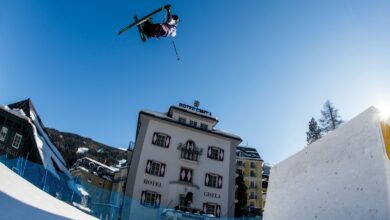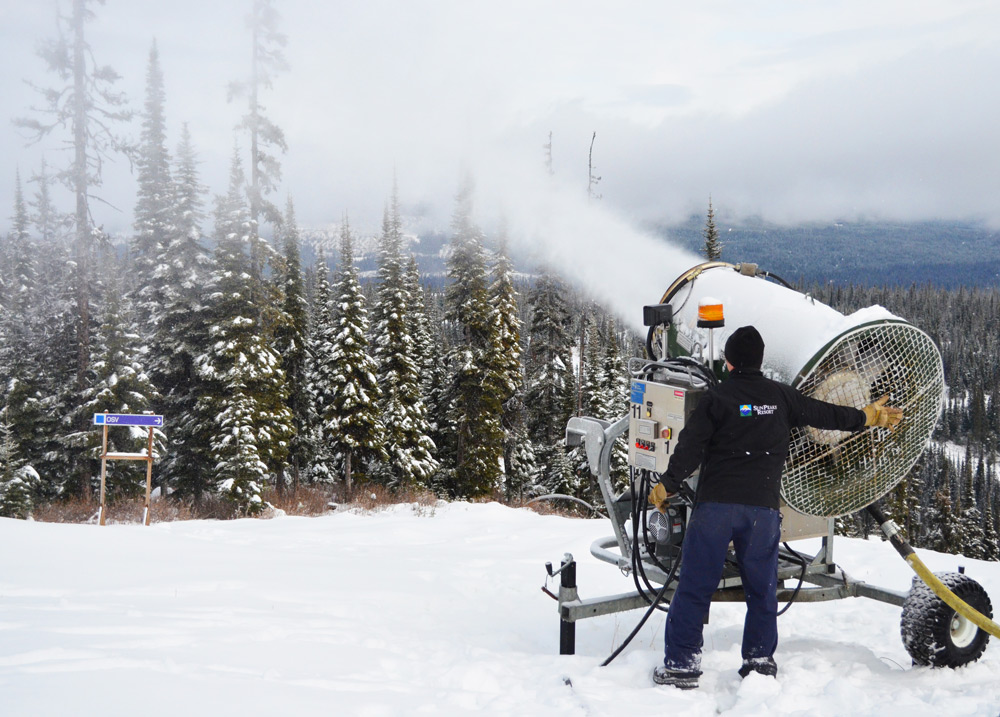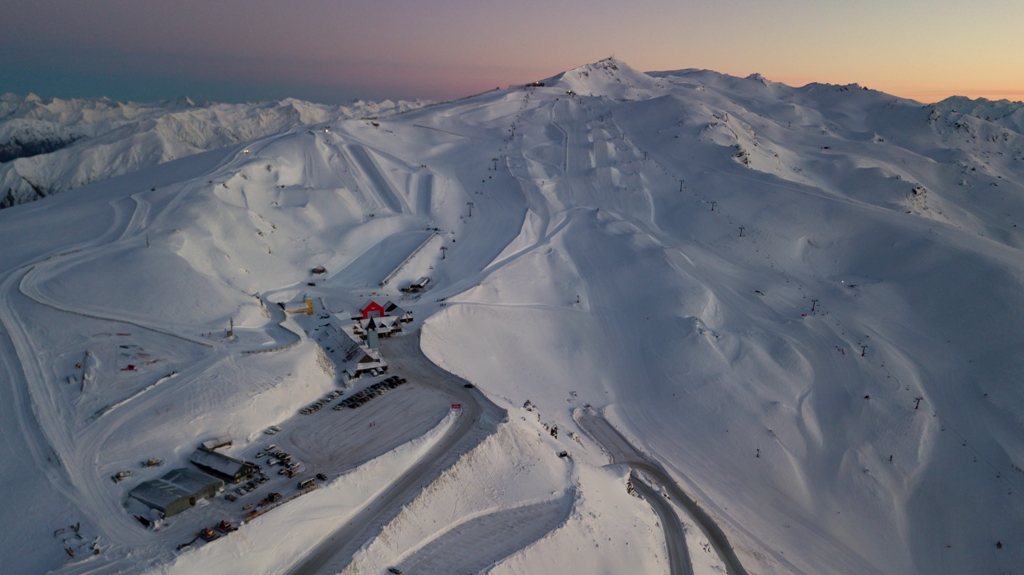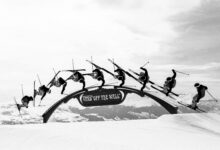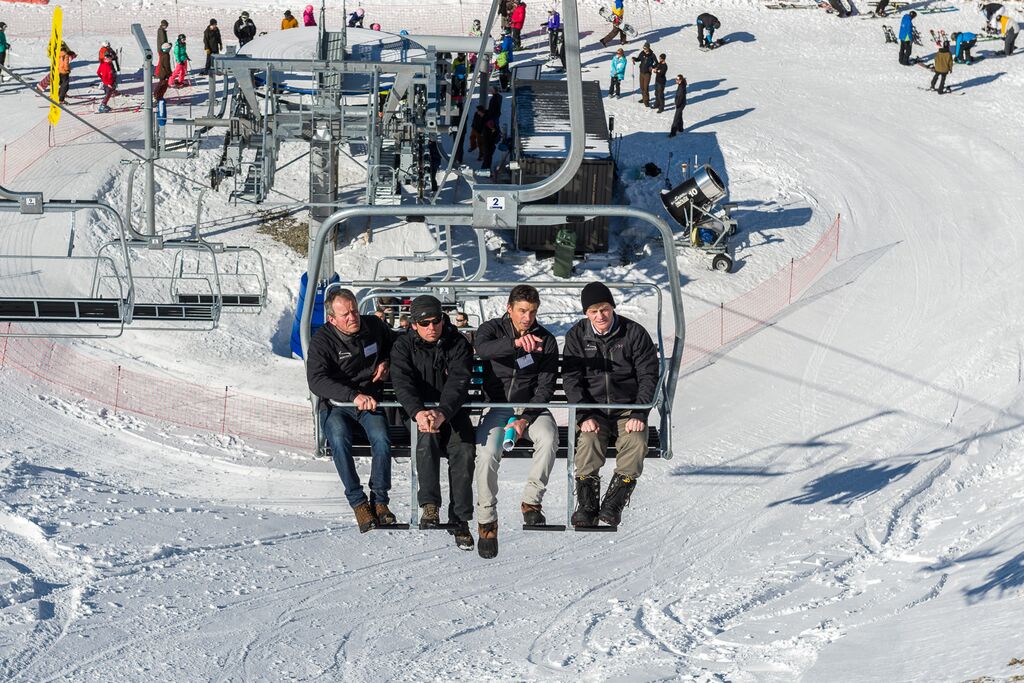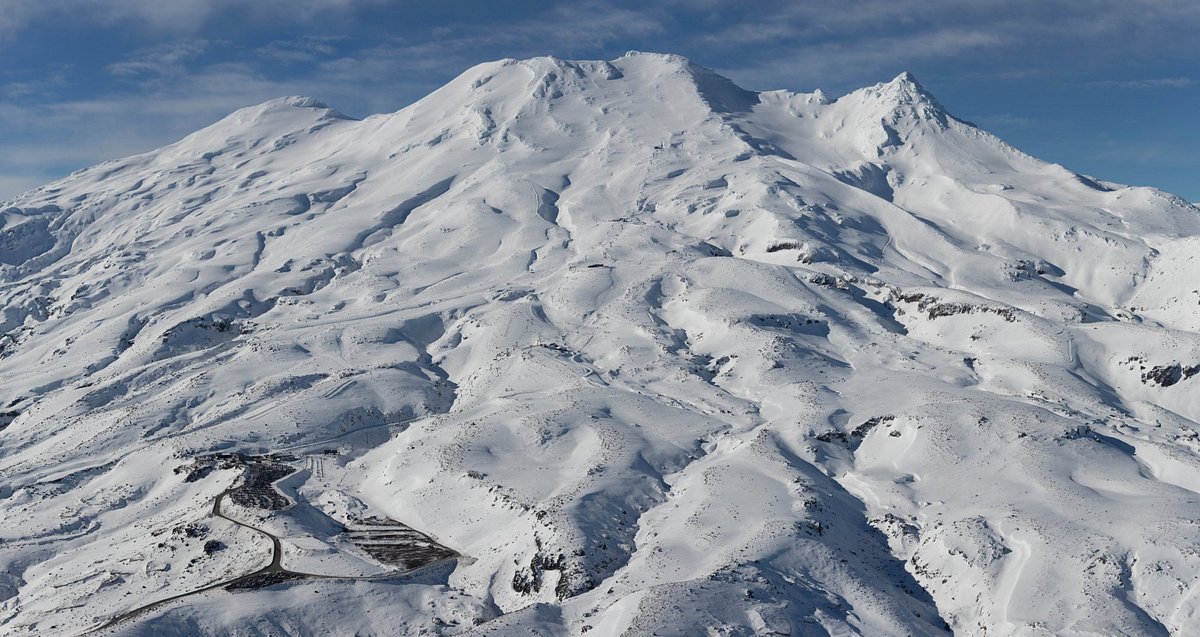
Supplied by Save Mt Ruapehu
John Sandford and Sam Clarkson were interviewed on the Nine to Noon show on National Radio. The recording of the interview is available on the National Radio Nine to Noon website. The Waikato Times has also published an article featuring the John Sandford bid to purchase Turoa.

Kathryn Ryan:
At least two potential bidders have emerged for Ruapehu Alpine Lifts, which collapsed last October going into voluntary administration. This morning we hear from the first out of the blocks. It is a consortium of residents, local businesses, seasoned and life pass holders, out of town property owners from Ohakune and its environs. The threat of loss of the tourism magnet that is the skifield has prompted intense efforts for a survival plan for the major tourist attraction and lifeblood for local businesses. Administrators have been working since October trying to find a long-term solution for Ruapehu Alpine Lifts, which runs both Whakapapa and Tūroa ski fields. RAL has debts of $35 million and the government has put in $10 million to keep the business running while a solution is sought.
A group of life pass holders in the Save Mt Ruapehu Skifields group have formed an incorporated society as part of a proposal for the ski fields to be community-owned and not-for-profit. We’ve heard from them previously on Nine to Noon. Now at least two separate bids for all or part of the business are in the offing. The first we’ll speak to today is for the Tūroa operation alone.
Meanwhile, the first snow of the winter has fallen on the mountain but season passes are yet to be made available. John Sanford is a former RAL board member, businessman and company director who’s leading a new entity Tūroa Alpine Limited which lodged a bid with both MBIE and the administrators last week.
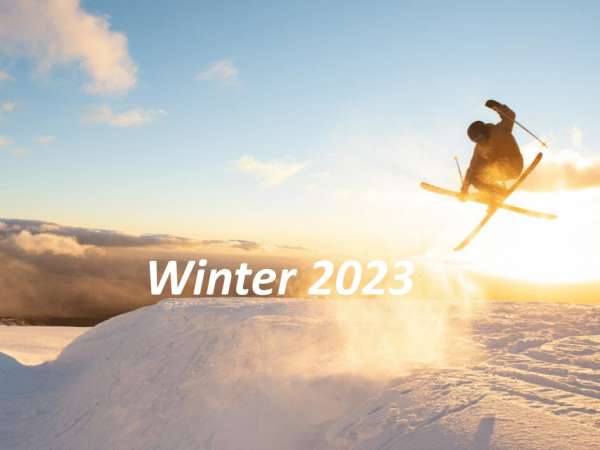
John Sanford
So tell us about Tūroa Alpine Limited and who is involved?
I’m not at liberty to give the other names but your description earlier was a good summary of the spread and depth of potential ownership if we’re successful. And businesses around the region, not necessarily related to the skifield but who understand the importance, the economic and social importance of that entity to what was used to be called the Waimarino region and now the Southern part of the Ruapehu region.
So what will the structure of the proposed business be?
It will be a public company and people will be able to buy shares in the company. It will be a standard commercial entity and we won’t be seeking public-benefit-entity status, i.e. being able to be regarded as tax free. It will be just a standard business model.
So fully commercial and what form of business? Could you give us an indication, a bit more detail of what the actual business entity would be legally? What format it would take?
It would be a publicly owned company. So with more than a couple of hundred shareholders, it could well have a thousand or more. And the capital will be raised to not only make the bid and pay for the opportunity to acquire the business and operating assets around Ohakune and Tūroa, but also having enough money in the bank that it doesn’t doesn’t suffer the same fate that RAL did.
So you’re not aiming to make millions out of this, but you want to be profitable, you want to break even at least. Is the capital raising going to come from the shareholders? That will be the entire source of the capital raise?
Yes.
Do you know if you have enough yet to do this?
I don’t know if we have enough yet, but I’m confident with what we, the commitments that we do have, that we’ll be able to raise the capital needed.
What’s the figure you need?
At the moment we’re planning around $10 million, maybe $8 million, between eight and ten, but there’s still some work to do on that.
What would that buy?
The right to operate Tūroa skifield and continue to operate it.
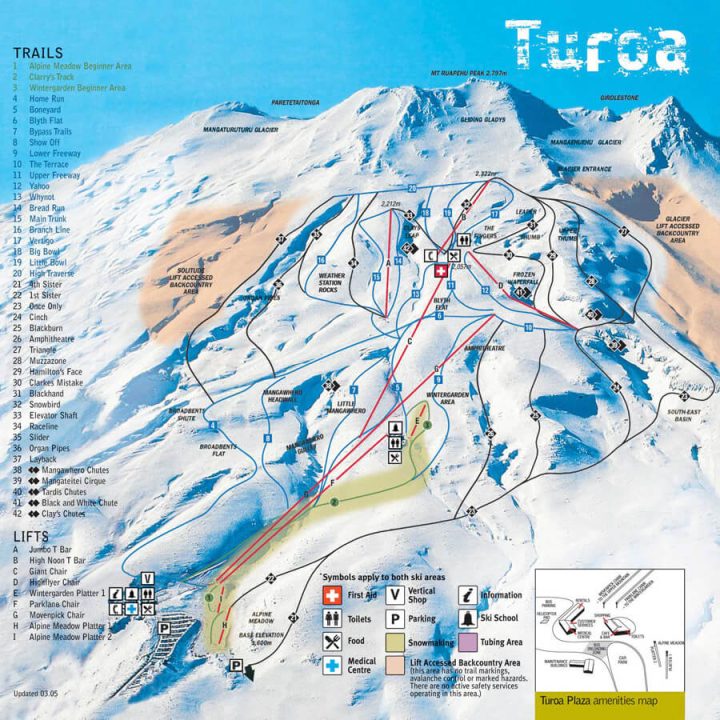
It would purchase the assets?
Yes, the business and assets of Tūroa are both on the mountain and in Ohakune.
Could you clarify whether some of the hospitality and other businesses actually on the mountain are assets of RAL? In other words, you know, are you going to have a restaurant and a cafe and a ski shop and all those things? Or are we talking absolute bare-bones? What would it look like?
Initially, it would include all those things and in long term, all those services will be supplied on the mountain. But our intention would be over time to let other people have the opportunity of running various commercial activities on the mountain, such as the cafes.
Which would be a shift from RAL’s direction in some ways, wouldn’t it? It was a fairly limited shop on that front?
That’s right. But we just feel that it’s a better business model to allow other people to supply that and that our focus ultimately ends up being on making sure that the actual facilities are fit the purpose, meet DOC requirements and all other health & safety requirements, and work properly, and make sure that the infrastructure works well for the business. And then other people can engage in other things such as a retail, hire shops, cafes, etc.
What are the operating costs like though on this mountain?
It’s expensive infrastructure. It needs a lot of maintenance and that’s in the absence of a disaster like we had 3 years ago taking out the High Noon lift. It’s got to deal with a particularly nasty and complicated form of de-icing that has to happen on that structure. And there’s a limit to how often it’s typically going to open in a year.
So explain to me the maths. If RAL couldn’t do it, how can your new consortium do it? What’s the nitty gritty?
The challenge really in the past, and RAL actually operated profitably for many, many years. It was only in recent years that it’s run into this problem. What it did is it ran out of cash and wasn’t well enough capitalised to weather some bad seasons. So our intention is to have enough money in the bank to operate, if we are successful, to be able to operate from this year and the next two years, so three years with three bad seasons. Now, if you go back over the records, Ruapehu and Tūroa, they haven’t had three bad seasons in a row, three big impacts in a row, but we’re actually budgeting on actually having three bad seasons in a row. So we had COVID interruptions and then we had a shocking no-snow season last year. But you would be capitalising and have an operating budget, including staff salaries, all the maintenance, all the stuff that would enable you to go three years of pretty rubbish seasons.
Can I ask then, given you were on the board of RAL, why it was so undercapitalised that it could not cash flow its way through three bad seasons?
When I was on the board, the company was managing to pay its way and showing profits annually. So I can’t comment on what happened subsequently, but in essence, they did too much, too fast, with not enough capital to make it work. So some of the expansion that we saw in facilities such as the gondola on the National Park side on Whakapapa, was that a factor? I don’t know to what extent, and so I couldn’t comment on that because the Sky Waka was financed off-balance-sheet in a sense. It was bondholders, a number of bondholders who put up the money to pay for the Sky Waka, but there were other associated costs. You ran out of cash, and because of the previous capital structure of RAL, it was operating with a capital structure of $130,000 put up many years ago by a group of individuals, and to protect the non-taxpaying status of the company, it couldn’t introduce new capital in a way that would attract people to invest because no benefits of any kind could be paid to those shareholders, and that’s how it retained its tax-free status.
That $130,000, was that the life pass holders?
No. That was the paid-up capital of the company when it was formed 70 years ago this year, actually, and so people put in money, and the capital was $130,000. And shares did subsequently change hands sometimes, but they only ever changed hands for their nominal value, i.e. $1 or $20 a pop, because the company couldn’t pay any benefit of any kind to shareholders, so the shares were only worth their “par” value in a sense. Although, if you looked at the balance sheet, it was different to that, but that’s another whole story. Because the company did have some accumulated retained earnings over the years, and so under Dave Mazey’s tutelage and leadership, the company in the 20-plus years that Dave was there, the company did well and made some good profits.
What I’m hearing from you is you can’t be a bit horse and a bit donkey. You’re either, as we might hear in a moment, from the life pass holders, you’re going community-owned, not-for-profit, or you are going full commercial, don’t try and be both. Is that what I’m hearing from you?
That’s my view, and in fact, there are a lot of life pass holders that actually expressed interest in taking a stake in this business. So they see the difference, and it’s worth saying that whatever proposal we come up with, we will respect the current situation of life pass holders and work together with the representatives and even individually if necessary to come up with something that may not please everyone, but hopefully will please the majority.
What will happen to the $40 million debt, and will you be depending on that being written off somehow?
We’re not involved in that. That’s entirely over to the administrator of the company.
You would need a clean sheet?
We would have a clean sheet because what we’re doing is offering to buy the assets, and we’re taking over some liabilities too, particularly around staff. So we’re taking over some liabilities, but the actual debt itself, including to life pass holders, of which my family have a couple, that rests with RAL.
You’re not asking for a fresh contribution from life pass holders other than those who want to become part of your consortium. Would you honour those who already have an RAL life pass?
We haven’t resolved that completely yet. I’ll be having discussions about that with Sam and his fellow people in the Save Mt Ruapehu consortium.
What happens to a life pass holder? Obviously, some are going to become part of your consortium, but the question is, will you honour the others who have life passes?
It’s not resolved, but people won’t be left out to dry. We won’t be saying you’re abandoned or you’ve got to write out another check for another life pass that’s similar to the amount you paid before. We would look at a compromise.
Why Turoa only, and why would the administrators be interested in only selling part of the asset?
Because that’s the area that I was born and raised in, and I’ve been involved in businesses and life there for many, many years. But also, I can see, having run businesses myself in the past, I can see how with good community and wider business engagement between the operations on the mountain and those other communities, that you can create a really dynamic and successful business because it’s engaged with much more than the business Tūroa has been engaged with the community in the past.
Is this a pitch to local businesses?
Ohakune is a flourishing town, but there’s a big difference when there’s thousands of people up on that mountain or in for the winter and when there’s not.
Is this a big difference? Are you reaching out and saying, we’re not going to shut you out of a connection to the skifield? We may not even directly compete with you in some of your businesses, for example, in equipment hire or supply or whatever. We might even let you run a transport operation up the mountain and not take control of that. Are you pitching this to the local businesses as saying, we will work with you? In fact, we want you to own us.
Yes, that’s right. Because I’m not looking for a big stake in this business, and I’m not even looking to be a director. I’m just doing it as a promoter because I can see the big picture. I know that will work. I feel very confident that will work. And to me, it’s the right thing to do for the community in which I was born and raised.
Are you in conversation with other potential bidders for the whole operation? Is there any indication, and we’re going to speak to a second potential bidder later in the week. Is there any potential for cooperation between these groups? Or are you quite different beasts with quite different interests and quite different structures in mind?
Yeah, I think that’s the best description. I have been in discussions with a bidder for the whole business. And I’ve also been in discussions with another bidder for the Tūroa part of the business. But yeah, there’s no deal for now, let’s put it that way. They are different beasts. I mean, our beast, if you like to call it that, is one with extensive ownership. And other bids are actually being made by people with just a handful of shareholders at the stage, or as I believe.
How quickly are things moving?
Probably not quickly enough. But I mean, that’s just a matter of the process that’s underway. Because not only are the voluntary administrators involved, also MBIE are involved as well.
Your bid is in?
Yes.
keep tuned at https://www.savemtruapehu.org.nz/


